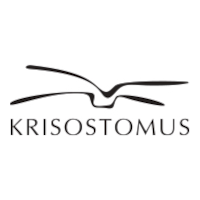-
Baldai ir namų interjeras
- Virtuvės baldų priedai
- Virtuvinės spintelės
- Virtuvės ir valgomojo kėdės
- Virtuvės ir valgomojo stalai, staliukai
- Valgomojo komplektai
- Virtuvės baldų komplektai
- Virtuvės stalviršiai
- Virtuvės baldų kolekcijos
- Vonios spintelės
- Vonios komplektai
- Vonios veidrodžiai
- Vonios lentynos
- Vonios aksesuarai
- Vonios kambario baldų kolekcijos
- Vaikiškos lovos
- Vaikiški čiužiniai
- Vaikiškos kėdutės ir staliukai
- Vaikiški sėdmaišiai, foteliai, pufai
- Kūdikių lovytės
- Vaikiškos lentynos
- Vaiko kambario baldų komplektai
- Vaikiškos spintos
- Vaikiškos komodos
- Vaikiškos spintelės
- Vaikiški rašomieji stalai
- Vaikiškos mokyklinės kėdės
- Žaislų dėžės
- Vaikų kambario baldų kolekcijos
-
Apranga, avalynė, aksesuarai
-
Vaikams ir kūdikiams
- Kūdikio priežiūrai
- Maitinimo priemonės
- Vaikiški vežimėliai ir jų priedai
- Prekės mamoms
- Autokėdutės ir jų priedai
- Maniežai vaikams
- Gultukai ir sūpynės
- Kūdikių ir vaikų maistas
- Nešioklės
- Vaikštynės
- Čiužiniai kūdikiams
- Antspaudai kūdikiams
- Sauskelnės
- Kūdikių lovytės
- Patalynė kūdikiams
- Kūdikio kraitelis
- Saugos varteliai, apsaugos
- Drabužiai kūdikiams
-
Autoprekės
-
Kvepalai, kosmetika
- Makiažo pagrindai, pudros
- Bronzantai, skaistalai
- Lūpų dažai, blizgiai, balzamai, vazelinai
- Akių šešėliai, pieštukai, blakstienų tušai, serumai
- Manikiūro, pedikiūro priemonės
- Kosmetinės, veidrodėliai
- Makiažo šepetėliai, kempinėlės
- Nagų lakai, stiprintojai
- Priklijuojamos blakstienos, blakstienų rietikliai
- Antakių dažai, pieštukai
- Veido kremai
- Veido prausikliai, valikliai
- Veido aliejai, serumai
- Veido kaukės, paakių kaukės
- Veido masažuokliai, valymo įrankiai
- Paakių kremai, serumai
-
Santechnika, remontas, šildymas
- Oro drėkintuvai
- Meteorologinės stotelės, termometrai
- Oro sausintuvai, drėgmės surinkėjai
- Eteriniai aliejai difuzoriams
- Oro valytuvai
- Ventiliatoriai
- Vonios ventiliatoriai
- Kondicionieriai, šilumos siurbliai, rekuperatoriai
- Oro reguliavimo įrangos priedai
- Mechaniniai įrankiai
- Elektriniai įrankiai
- Tvirtinimo detalės
- Įrankių dėžės, laikikliai
- Sandėliavimo lentynos
- Buitinės kopėčios, rampos
- Sniego kastuvai, stūmikliai
- Metalo detektoriai
- Surenkamos lentynų sistemos
- Platforminės svarstyklės
- Sniego valytuvai
- Aukšto slėgio plovimo įranga
- Stebėjimo kameros
- Apsaugos sistemos, valdikliai
- Durų skambučiai, akutės
- Davikliai, jutikliai
- Signalizacijos
- Dūmų, dujų detektoriai
- Domofonai
- Apsaugos sistemų priedai
- Elektros jungikliai, rozetės
- Elementai
- LED juostos
- Žibintuvėliai, prožektoriai
- Elementų krovikliai
- Prailgintuvai
- Elektros lemputės
- Maitinimo šaltiniai
- Komponentai saulės jėgainėms
- Tekstiliniai kabeliai ir elektros kaladėlės
- Laikmačiai, termostatai
- Įmontuojami šviestuvai, LED panelės
-
Virtuvės, buities, apyvokos prekės
- Virtuvės įrankiai
- Kepimo indai, popierius, formos
- Indai, lėkštės, pietų servizai
- Maisto saugojimo indai
- Taurės, puodeliai, ąsočiai
- Peiliai ir jų priedai
- Puodai, greitpuodžiai
- Keptuvės
- Stalo įrankiai
- Termosai, termopuodeliai
- Kavinukai, virduliai
- Prieskonių indeliai, malūnėliai
- Pjaustymo lentelės
- Prieskoniai, prieskonių rinkiniai
- Konservavimo indai ir priedai
- Gertuvės, termo puodeliai
- Vienkartiniai, teminiai indai
- Vandens filtrai
-
Buitinė technika ir elektronika
- Virduliai
- Gruzdintuvės
- Kavos aparatai
- Vandens filtrai
- Trintuvai, smulkintuvai
- Išskirtiniai maisto gaminimo prietaisai
- Pjaustyklės, peilių galąstuvai
- Svarstyklės (virtuvinės)
- Kavamalės
- Vakuumatoriai
- Plakikliai
- Virtuviniai kombainai
- Vaflinės, el. blynų keptuvės
- Skrudintuvai
- Kokteilinės
- Sulčiaspaudės
- Daigyklos, lempos augalams
- Garų puodai, daugiafunkciai puodai
- Sumuštinių keptuvės
- Gazuoto vandens aparatai ir priedai
- Griliai, marinatoriai
- Mėsmalės
- Vaisių džiovyklės
- Vandens aparatai
- Duonkepės
- Dulkių siurbliai
- Dulkių siurbliai-šluotos
- Dulkių siurbliai-robotai
- Plaunantys siurbliai
- Svarstyklės (buitinės)
- Garais valantys prietaisai, grindų valytuvai
- Langų valytuvai
- Akumuliatoriai dulkių siurbliams
- Dulkių siurblių priedai
- Meteorologinės stotelės, termometrai
- Masažuokliai
- Plaukų formavimo ir tiesinimo prietaisai
- Elektriniai dantų šepetėliai
- Plaukų džiovintuvai
- Barzdaskutės
- Manikiūro, pedikiūro aparatai
- Šilumos prekės
- Plaukų kirpimo mašinėlės
- Epiliatoriai
- Elektrinių dantų šepetėlių antgaliai
- Irigatoriai
- Kraujospūdžio matuokliai
- Veido priežiūros prietaisai
- Inhaliatoriai
- Termometrai
- Masažinės vonelės
- Ventiliatoriai
- Kondicionieriai, šilumos siurbliai, rekuperatoriai
- Šildytuvai
- Oro drėkintuvai
- Vandens šildytuvai
- Grindų ir veidrodžių šildymo kilimėliai
- Vonios ventiliatoriai
- Dūmų detektoriai
- Oro reguliavimo įrangos priedai
-
Sportas, laisvalaikis, turizmas
- Turistinis inventorius
- Gertuvės
- Turistinės ir kelioninės kuprinės
- Palapinės
- Pripučiami čiužiniai ir baldai
- Turistiniai baldai
- Turistiniai čiužiniai ir kilimėliai
- Alpinizmo įranga
- Turistinio inventoriaus, drabužių ir avalynės priežiūros priemonės
- Miegmaišiai
- Biotualetai
- Autoturizmo reikmenys
- Priemonės nuo uodų
- Gimnastikos ir fitneso prekės
- Masažo reikmenys
- Vandens sportas
- Futbolas
- Kuprinės ir krepšiai
- Įtvarai
- Krepšinis
- Rakečių sportas
- Kovos menai
- Ėjimo lazdos
- Smiginis
- Golfas
- Tinklinis
- Žingsniamačiai, chronometrai, širdies ritmo monitoriai
- Baletas ir meninė gimnastika
- Kamuolių pompos ir adatos
- Diskgolfas
- Beisbolas
- Rankinis
- Jojimo prekės
- Grindų ir žolės riedulys
- Dviračiai, riedučiai, riedlentės
- Svoriai, svarmenys, grifai
- Žaidimų stalai
- Treniruokliai, treniruočių įranga
- Kamuoliai
- Aminorūgštys
- Angliavandeniai
- Baltymai
- Batonėliai
- Kiti papildai ir preparatai
- Energetikai
- Funkcinis maistas
- Glutaminas
- Kreatinas
- L-karnitinas
- Papildai ir preparatai masei auginti
- Papildai ir preparatai sąnariams
- Produktai atsistatymui
- Riebalų degintojai
- Papildai ir preparatai lieknėjimui
- Testosterono skatintojai
- Vitaminai
-
Mobilieji telefonai, Foto ir Video
- Telefono dėklai
- Apsauginės plėvelės telefonams
- Telefono laikikliai
- Mobilieji telefonai
- Krovikliai telefonams
- Laidai telefonams
- Atsarginiai maitinimo šaltiniai (power bank)
- Telefonų dalys ir įrankiai jų remontui
- Priedai telefonams
- Atminties kortelės telefonams
- Asmenukių lazdos (selfie sticks)
- Akumuliatoriai telefonams
- Laisvų rankų įranga
- Ausinės
- Priedai fotoaparatams
- Fotografijos apšvietimo įranga
- Skaitmeniniai fotoaparatai
- Momentiniai fotoaparatai
- Atminties kortelės fotoaparatams, kameroms
- Fotoaparato stovai
- Dėklai, krepšiai fotoaparatams ir objektyvams
- Akumuliatoriai fotoaparatams
- Objektyvai
- Fotoaparatų krovikliai
- Filtrai objektyvams
- Įkraunami elementai
-
Kompiuterinė technika
- Korpusų priedai
- Vidiniai kietieji diskai (HDD, SSD, Hybrid)
- Operatyvioji atmintis (RAM)
- Korpusai
- Komponentų priedai
- Kompiuterių ventiliatoriai
- Maitinimo šaltiniai (PSU)
- Pagrindinės plokštės
- Vaizdo plokštės (GPU)
- Procesorių aušintuvai
- Valdikliai
- Termo pastos
- Procesoriai (CPU)
- Optiniai įrenginiai
- Vaizdo plokščių aušintuvai
- Garso plokštės
- TV imtuvai, FM, video plokštės
- Aušinimas vandeniu - rinkiniai
- Aušinimas vandeniu - aksesuarai
-
Dovanos, dekoracijos, gėlės
- Kvepalai Jai
- Kosmetika Jai
- Aksesuarai moterims
- Mobilieji telefonai
- Belaidės ausinės
- Kvapų difuzoriai
- Dulkių siurbliai-robotai
- Kavos aparatai
- Išmanieji laikrodžiai, apyrankės
- Gruzdintuvės
- Namų kvapai
- Plaukų formavimo ir tiesinimo prietaisai
- Epiliatoriai
- Plaukų džiovintuvai
- Veido priežiūros prietaisai
- Elektriniai dantų šepetėliai
-
Gyvūnų prekės
- Drabužiai šunims
- Žaislai šunims
- Guoliai, pagalvėlės
- Transportavimo narvai, krepšiai
- Dubenėliai, dėžės maistui
- Sausas maistas šunims
- Priežiūros priemonės gyvūnams
- Pavadėliai šunims
- Kelioniniai reikmenys
- Skanėstai šunims
- Antkakliai, petnešos šunims
- Konservai šunims
- Vitaminai, papildai, antiparazitinės priemonės šunims
- Kosmetinės priemonės gyvūnams
- Dresūros priemonės šunims
- Žaislai katėms
- Draskyklės
- Sausas maistas katėms
- Konservai katėms
- Kraikas katėms
- Kačių tualetai
- Skanėstai katėms
- Pavadėliai, antkakliai, petnešos katėms
- Vitaminai, papildai, antiparazitinės priemonės katėms
- Guoliai, pagalvėlės
- Transportavimo narvai, krepšiai
- Dubenėliai, dėžės maistui
- Kosmetinės priemonės katėms
- Priežiūros priemonės katėms
-
Sodo prekės
- Sodo technikos dalys
- Drėgmės, temperatūros, pH, ORP matuokliai
- Lapų siurbliai, šakų smulkintuvai, trinkelių valytuvai
- Vejapjovės, žoliapjovės
- Trimeriai (žoliapjovės), krūmapjovės
- Gyvatvorių, žolės žirklės
- Karučiai
- Žoliapjovės, vejos robotai
- Aeratoriai, kultivatoriai
- Malkų skaldyklės
- Žemės grąžtai
- Sodo traktoriukai
- Šlavimo mašinos
-
n18.lt specializuota parduotuvė
n18.lt specializuota parduotuvė suaugusiems
Prekes suaugusiems specializuotoje internetinėje parduotuvėje n18.lt gali matyti tik lankytojai, kurie yra ne jaunesni nei 18 metų. Šioje svetainėje skleidžiama informacija gali daryti neigiamą poveikį asmenims iki 18 metų.Peržiūrėti prekes -
Knygos
-
Apsauginės, dezinfekcinės, medicininės prekės
- Kaukės, respiratoriai
- Apsauginės sienelės, dezinfekcinės stotelės
- Dezinfekcinis skystis
- Vienkartinės pirštinės
- Dezinfekciniai valikliai
- Apsauginiai skydeliai ir akiniai
- Maisto prekės
-
Išmanūs namai
- Išparduotuvė
-
Biurui, mokyklai, kūrybai
Rodyti daugiau kategorijų
 TOP ženklų dienos! Gerai žinomi prekių ženklai SUPERKAINOMIS!
TOP ženklų dienos! Gerai žinomi prekių ženklai SUPERKAINOMIS!  Didysis sandėlio valymas! Kainų pasiūlymai net iki -50%*!
Didysis sandėlio valymas! Kainų pasiūlymai net iki -50%*! 





